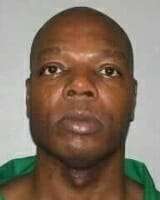
James Roach was executed by the State of South Carolina for a double murder. According to court documents James Roach and Joseph Shaw would attack a teen age couple where the girl was sexually assault and both were murdered. James Roach and Joseph Shaw would be arrested, convicted and sentenced to death. Joseph Shaw would be executed by way of the electric chair on January 11, 1985. James Roach who was seventeen years old when the double murder took place would be executed on January 10 1986.
James Roach More News
James Terry Roach, who murdered two teen-agers when he was only 17, was executed today after the Supreme Court rejected his appeal and the governor refused clemency requests from the United Nations, Mother Teresa, Jimmy Carter and human rights groups.
Roach, 25, was pronounced dead at 5:16 a.m., said Doug Catoe, a deputy corrections department commissioner.
″I leave you comfortable that I’ve been forgiven in my sins, just as I have forgiven those who have done this to me,″ Roach said in a final statement addressed to his family and fellow death-row inmates.
″I’m going to a much better place without a heavy burden upon me. I pray that my fate will some day save another kid that ends up on the wrong side of the tracks. … ″To my family and friends, there is only three words to say: I love you. May God bless each and every one of you.″
With two dissenting votes, the Supreme Court late Thursday refused to grant a stay, clearing the way for Roach’s early morning execution in South Carolina’s electric chair at the Central Correctional Institution.
U.N. Secretary-General Javier Perez de Cuellar; Joao Clemente Baena Soares, the secretary-general of the Organization of American States; Nobel Peace Prize winner Mother Teresa; former President Carter and international human rights groups all made appeals on Roach’s behalf.
But Gov. Dick Riley refused to grant clemency. He had also refused clemency for co-defendant Joseph Carl Shaw, who was 22 when the slayings occurred and was executed Jan. 11, 1985.
About 220 death penalty proponents and 60 opponents gathered outside the century-old prison on the Congaree River in chilly predawn temperatures before the execution.
Inside, Roach laughed nervously while waiting for the sentence to be carried out.
″He was very calm about everything,″ said said witness Sean Callebs. ″He showed no emotion.″
Roach, who was the second person put to death in South Carolina and the 51st in the nation since the death penalty was reinstituted in 1976, spent Thursday night visiting with relatives and a minister.
He requested a last meal of fried shrimp, hush puppies, french fries, tossed salad, cherry cheesecake and a soft drink, said Hal Leslie, a spokesman for the state Department of Corrections.
Roach’s attorneys argued that his life should be spared because he suffered from Huntington’s chorea, a mentally debilitating condition, and because international accords prohibit the execution of those younger than 18 at the time of their offense.
Similar arguments made to the 4th U.S. Circuit Court of Appeals earlier Thursday also were unsuccessful.
Roach said on ABC-TV’s ″Nightline″ Thursday he did not want to die.
″I think anybody who’s under 18 who is in the shape like I’m in, they can be rehabilitated,″ he said. ″I just hope that they let me live in prison. If I see somebody going down the same road that I’ve been going down, maybe I could say something to change his mind. ’Cause I’ve been there.″
In another interview, Roach said he would go willingly to his death.
″Won’t nobody have to drag me in there,″ he said, adding that he wouldn’t give prosecutors ″the satisfaction.″
Roach pleaded guilty to the 1977 murders of Carlotta Hartness, 14, and Tommy Taylor, 17. The Columbia teen-agers were attacked as they sat in a car at a park near their high school.
Taylor was shot in the face and Miss Hartness was taken to nearby woods, raped, shot in the back of the head and mutilated.
Roach, a native of Seneca, denied shooting the couple, blaming it on Shaw.
He said in his final statement, ″To the families of the victims, my heart is still with you in your sorrow. May you forgive me, just as I know that my Lord has done.″
David Bruck, a member of Roach’s defense team, said on ″Nightline″ that the murder of the teen-agers was ″horrible.″
″But it seems to me that if all the world except the United States has already turned its back on the execution of juvenile offenders who aren’t retarded like Terry is, then the United States has no need to go on with this business of brandishing the electric chair at its own children.″
Solicitor Jim Anders, who prosecuted the case, said on the same program that Roach was only months from his 18th birthday when the crimes were committed and knew right from wrong.
″I think that when people are this mean, this cruel, there is no other way to deal with them,″ Anders said.
While South Carolina law does not forbid the execution of minors, age is considered in sentencing. A bill outlawing the execution of minor offenders is pending in the state Senate.








